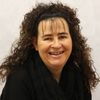Returning to work in the New Year can seem very boring compared to the excitement of Christmas. Traditionally, workplace boredom has been associated with negative outcomes, like poor performance, more errors and de-motivated staff.
Yet boredom, like most emotions which I study, has a purpose and despite widely held views about its negative connotations, research recently conducted has suggested that boredom can have positive outcomes, including increased creativity. Working with my colleague Rebekah Cadman at the University of Central Lancashire (UCLan), we recently assessed the experience of boredom and how it encourages stimulation of the mind to produce new thinking.
Our research examined the relationship between boredom and creativity on a range of tasks amongst 170 participants and found that engaging in "boring activities" such as tedious writing exercises before undertaking creative tasks does result in more creative thinking. To measure whether creativity was as a result of daydreaming, a subsequent study was conducted based on similar activities but instead focused on a boring reading task instead of writing (as writing is thought to hinder daydreaming).
The first study involved participants copying telephone numbers from a phone directory for 15 minutes (the most boring task we could think of!) so that we could explore the impact on subsequent levels of creativity shown in a divergent thinking task which involved coming up with as many uses for a pair of polystyrene cups as possible. Participants provided varied examples such as pencil pots, earrings, drums and plant pots - and even a Madonna-style bra!
The second study used a different population of 90 participants. All those that were involved undertook the same 'polystyrene cup' task but also a second creative task which involved completing a 'remote association test', in three minutes, to a series of 40 word problems (a convergent creativity task). The task involved participants being asked to offer associations for three unrelated words. For example, when provided with the words Law, Birthday and Swimming, 'suit' was considered the best option.
We found that after conducting these exercises, the number of creative answers were higher for participants who completed a boredom task followed by the creative task than for participants who completed the creative task in isolation. Creativity was even higher after the reading boring task (reading phone numbers out) than the writing one. This suggests that passive activities, like reading or attending meetings, can lead to more creativity whereas writing, which inherently reduces the scope for daydreaming, lessens the chance to be creative.
One reason that reading might afford greater opportunity for daydreaming than writing does is because shifting attention from the external situation becomes easier. This adds weight to the evidence that daydreaming is an important component to creative problem-solving as it provides the ability to re-evaluate information and mull over possible solutions.
This evidence shows that employers, who are under the misguided notion that boredom is a problem to be eliminated in the workplace through increased activities and tasks, should look to embrace it in order to enhance employee creativity. So if your boss catches you reading a novel at your desk, just tell them you're in the middle of some problem solving - it might make the January transition back to work that bit easier!
